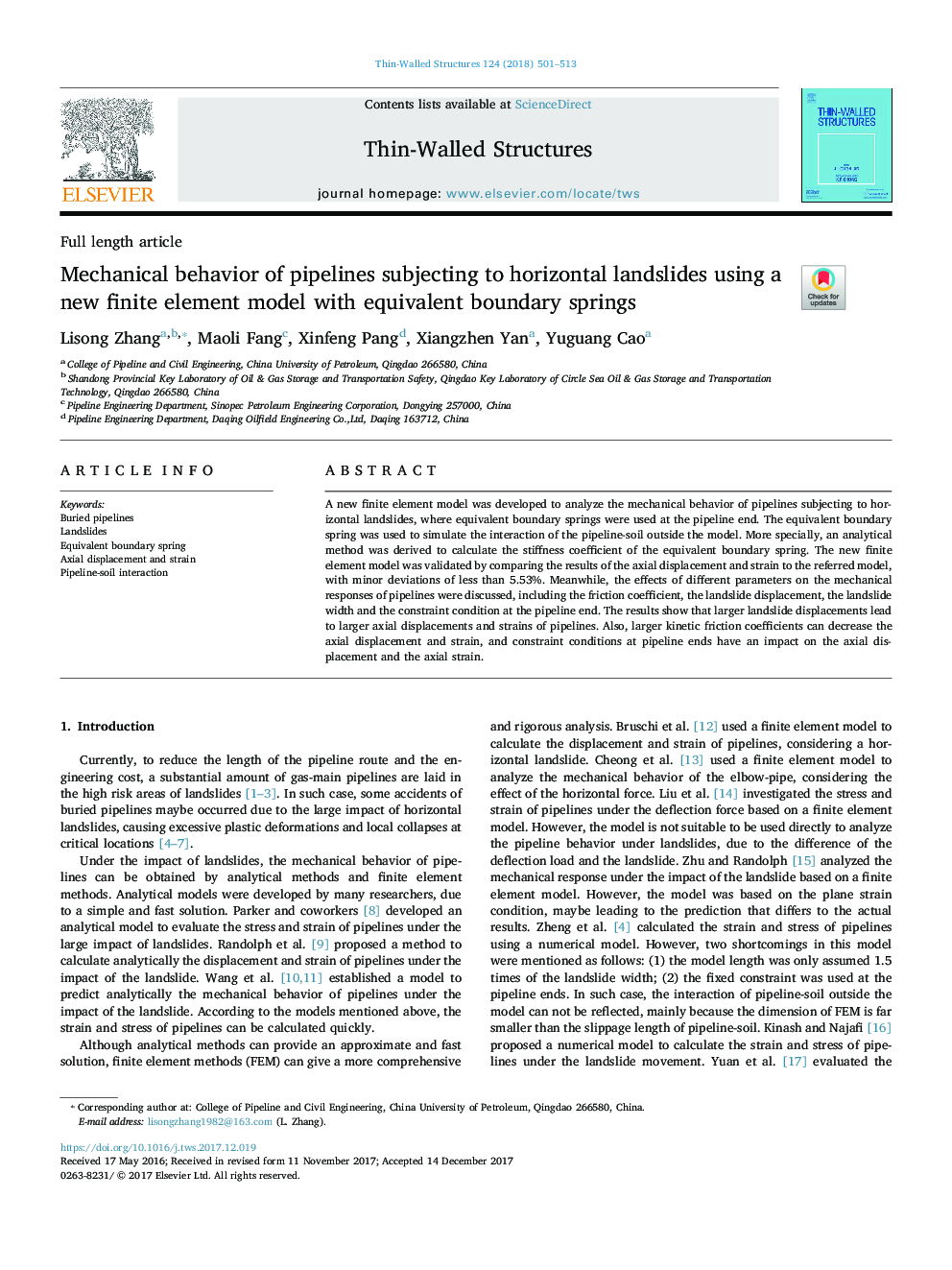| Article ID | Journal | Published Year | Pages | File Type |
|---|---|---|---|---|
| 6778359 | Thin-Walled Structures | 2018 | 13 Pages |
Abstract
A new finite element model was developed to analyze the mechanical behavior of pipelines subjecting to horizontal landslides, where equivalent boundary springs were used at the pipeline end. The equivalent boundary spring was used to simulate the interaction of the pipeline-soil outside the model. More specially, an analytical method was derived to calculate the stiffness coefficient of the equivalent boundary spring. The new finite element model was validated by comparing the results of the axial displacement and strain to the referred model, with minor deviations of less than 5.53%. Meanwhile, the effects of different parameters on the mechanical responses of pipelines were discussed, including the friction coefficient, the landslide displacement, the landslide width and the constraint condition at the pipeline end. The results show that larger landslide displacements lead to larger axial displacements and strains of pipelines. Also, larger kinetic friction coefficients can decrease the axial displacement and strain, and constraint conditions at pipeline ends have an impact on the axial displacement and the axial strain.
Keywords
Related Topics
Physical Sciences and Engineering
Engineering
Civil and Structural Engineering
Authors
Lisong Zhang, Maoli Fang, Xinfeng Pang, Xiangzhen Yan, Yuguang Cao,
